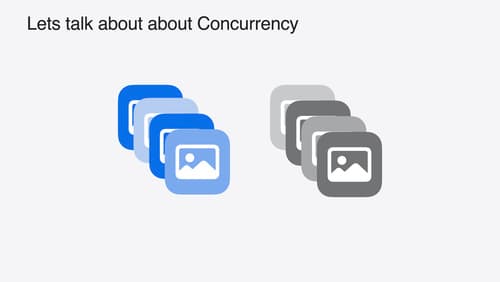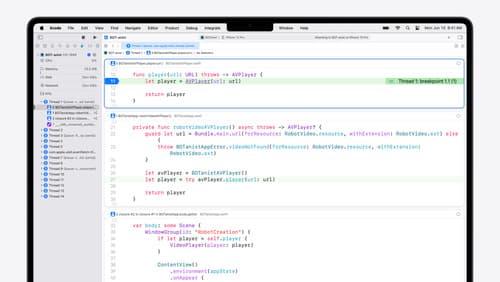When should I use main task.run?
Asked on 2025-05-17
1 search
In Swift, you should use mainActor.run when you need to execute a block of code on the main actor, which is typically associated with the main thread. This is particularly important for UI updates or any operations that must be performed on the main thread to ensure thread safety and avoid data races.
In the session "Migrate your app to Swift 6" from WWDC 2024, it is discussed that when you know for certain that a call will be on a particular actor, you can use assumeIsolated to inform the compiler that the code is already running on the main actor. This doesn't start a new task but tells Swift that the code is already running on the main actor, which can help prevent race conditions (Migrate your app to Swift 6).
If you are working with code that interacts with UI elements or other main-thread-bound operations, using mainActor.run or ensuring that your code is running on the main actor is crucial for maintaining the integrity and responsiveness of your application.

Discover Swift enhancements in the Vision framework
The Vision Framework API has been redesigned to leverage modern Swift features like concurrency, making it easier and faster to integrate a wide array of Vision algorithms into your app. We’ll tour the updated API and share sample code, along with best practices, to help you get the benefits of this framework with less coding effort. We’ll also demonstrate two new features: image aesthetics and holistic body pose.

Render Metal with passthrough in visionOS
Get ready to extend your Metal experiences for visionOS. Learn best practices for integrating your rendered content with people’s physical environments with passthrough. Find out how to position rendered content to match the physical world, reduce latency with trackable anchor prediction, and more.

What’s new in Xcode 16
Discover the latest productivity and performance improvements in Xcode 16. Learn about enhancements to code completion, diagnostics, and Xcode Previews. Find out more about updates in builds and explore improvements in debugging and Instruments.
